A Look Inside the Hat Shops of Yore
No lady wanted to be seen in public without a hat on.
Do you ever wish you could travel back in time just to window shop at all the wonderful stores that no longer exist? You’re not alone, but looking through old photos is the closest we’re going to get these days. We’ve taken you back to old beauty salons and shopping in the 1950s, and today we’re looking at something that’s largely disappeared in most places: women’s hat shops.
Across the years these millinery shops were important for both men and women. Prior to the 1960s everyone wore hats and it was a matter of some importance that women cover their hair when they left the house to not only appear fashionable, but also modest. Men had a variety of hats for different occasions, unlike today as baseball and knit caps dominate many people’s hat wardrobes.
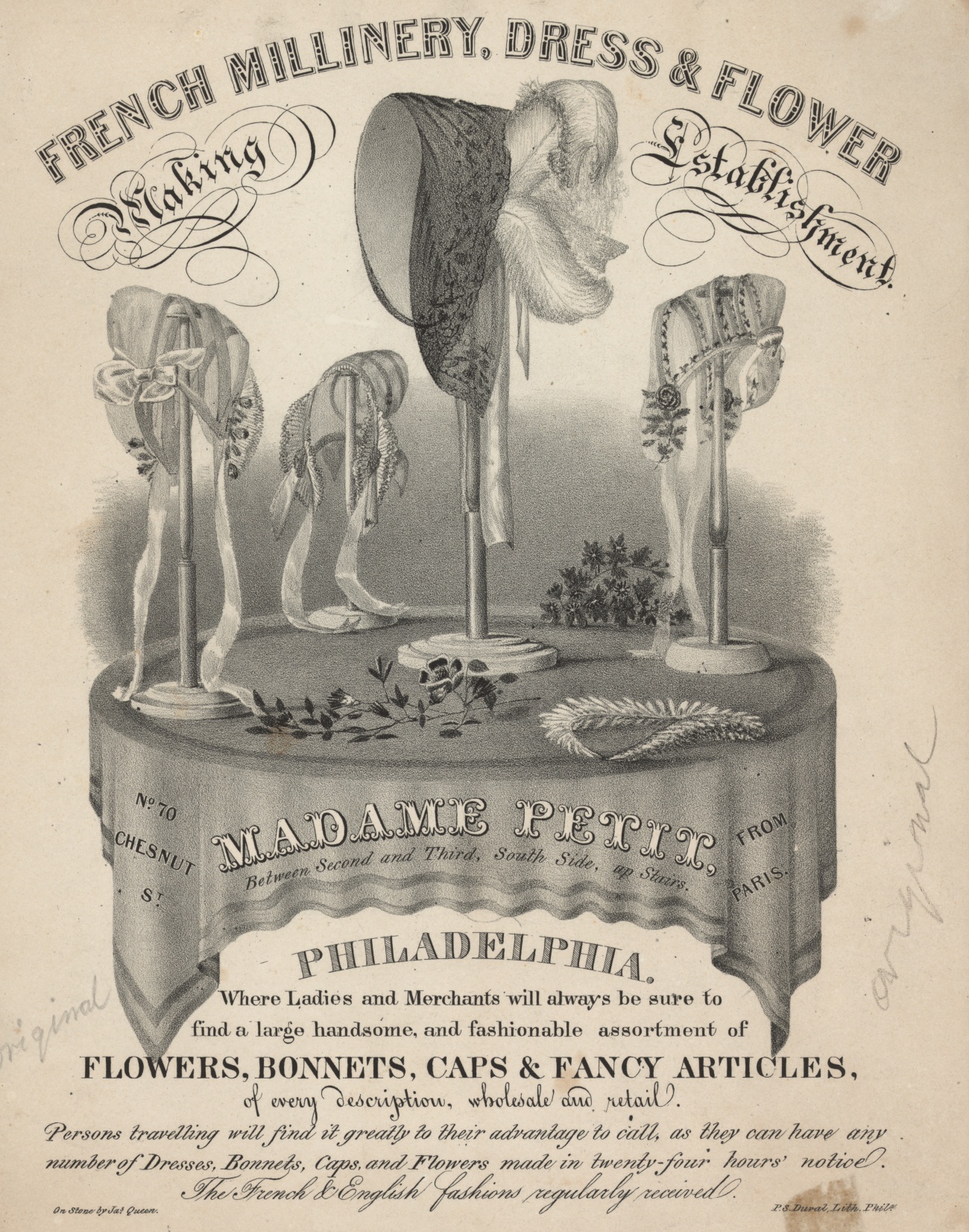
The advertisement above touts the latest hat designs from France brought to customers in Philadelphia. For centuries French fashion dominated the worlds of millinery and clothing. It was only in the 1960 and 1970s that designers from Italy, Japan, and the US began to make waves in the fashion industry.
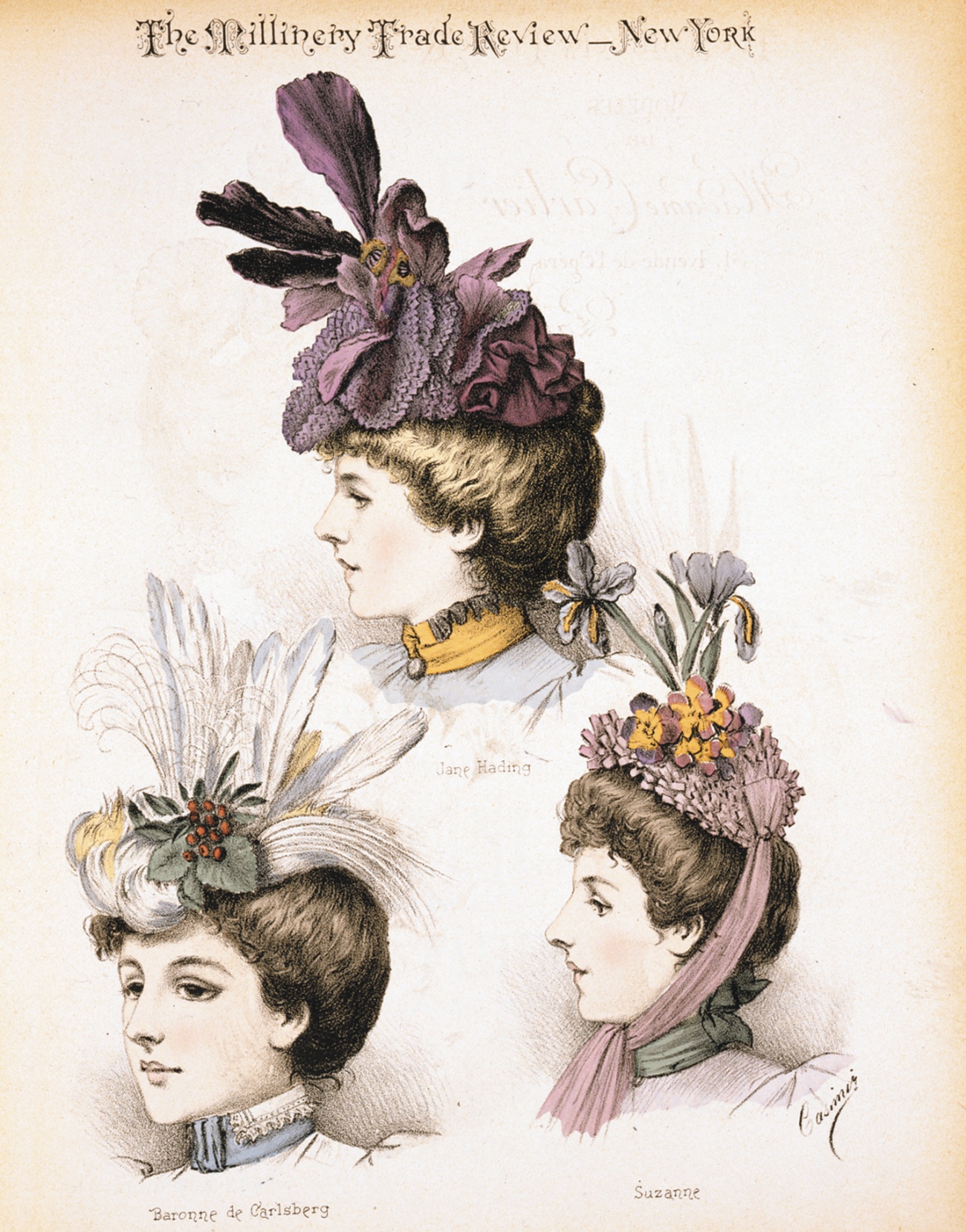
Before mass production women could take fashion plate images to their local milliner and request them to duplicate the hats in the images. This was done by hand with feathers, silk ribbons, and flowers carefully sewn on.
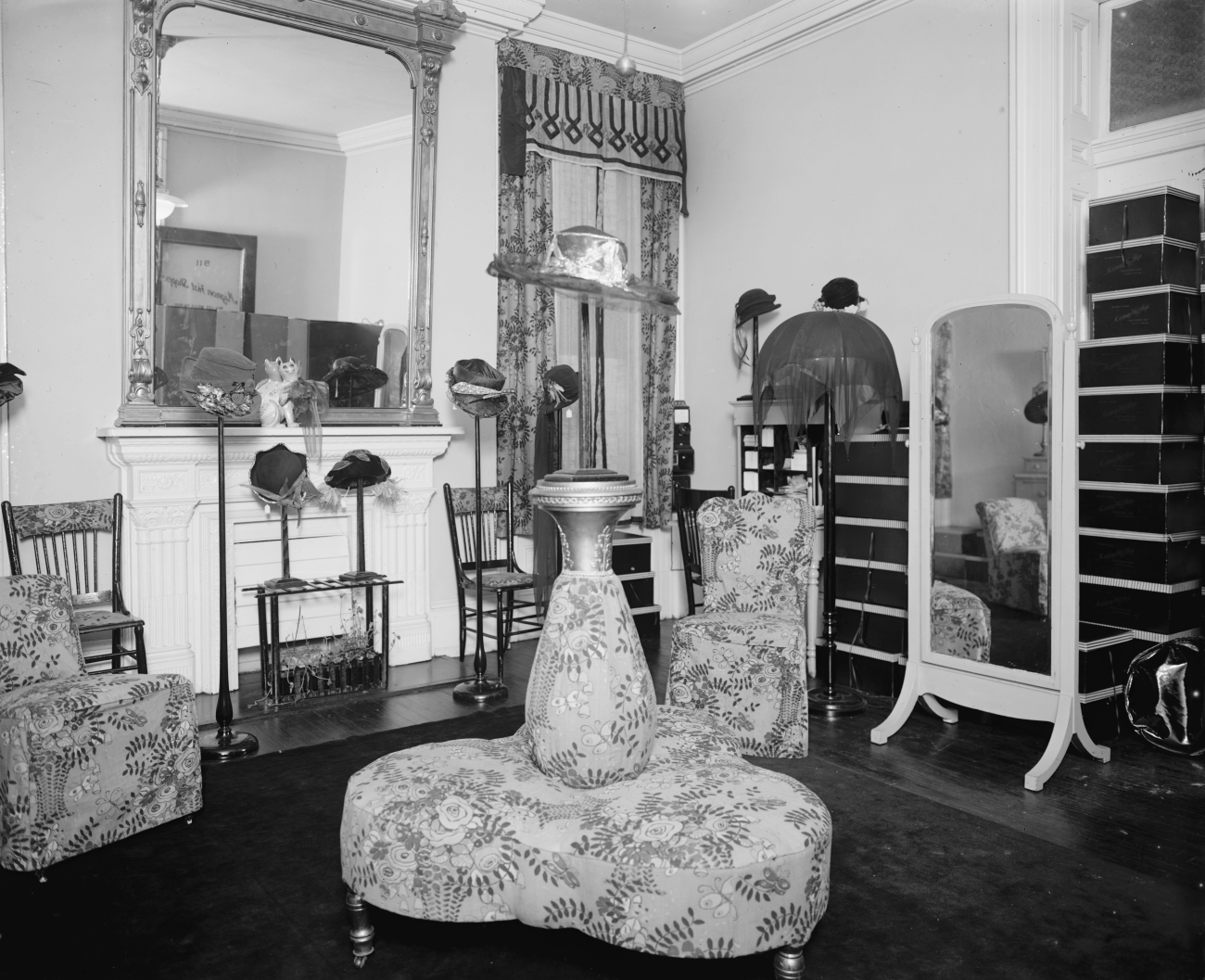
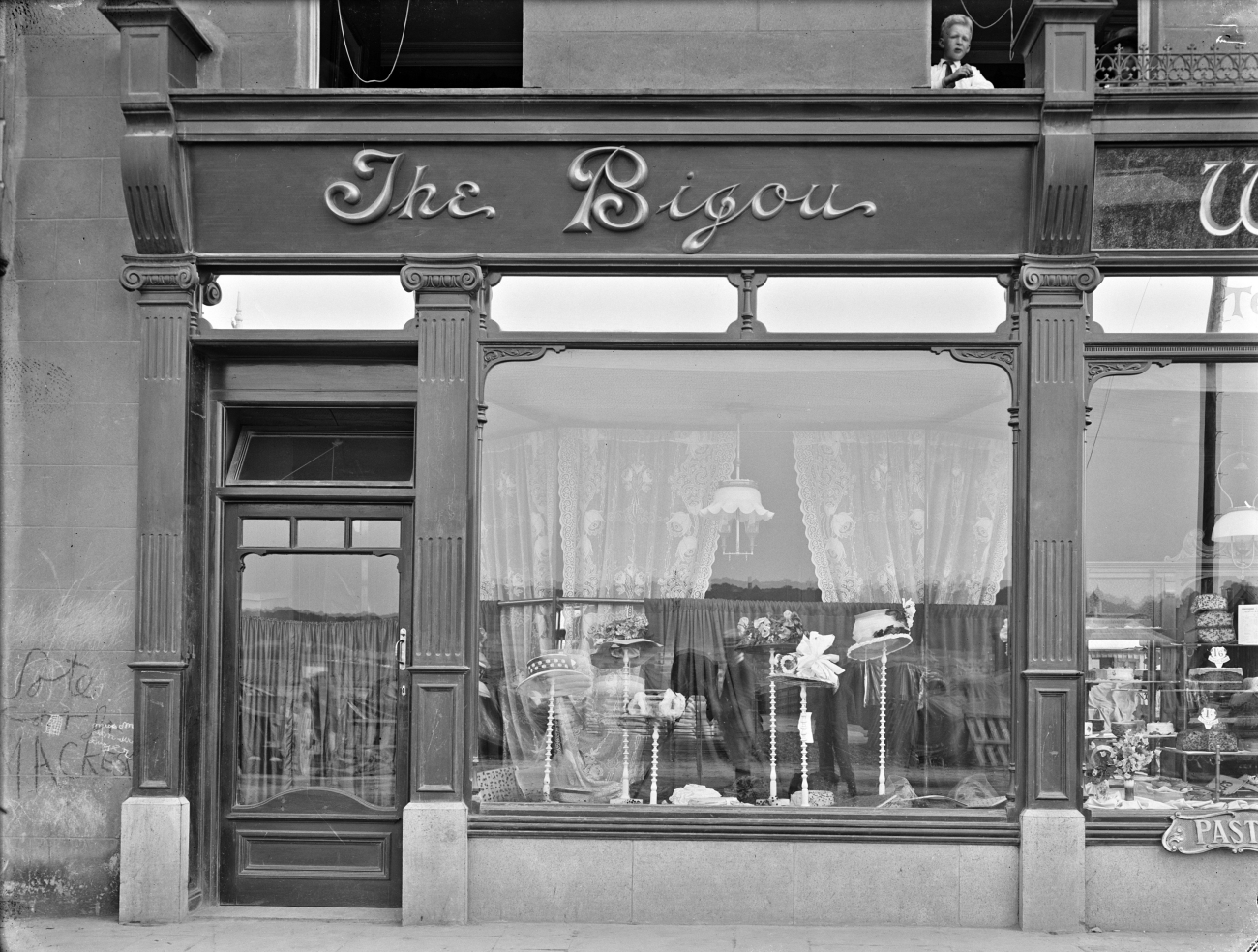
These couturier style shops were designed for women to spend a good deal of time in. They often offered comfortable seating, mirrors to try things on, and sometimes had models on hand to show off the latest designs. Glass cases showcased some of the more complicated designs.
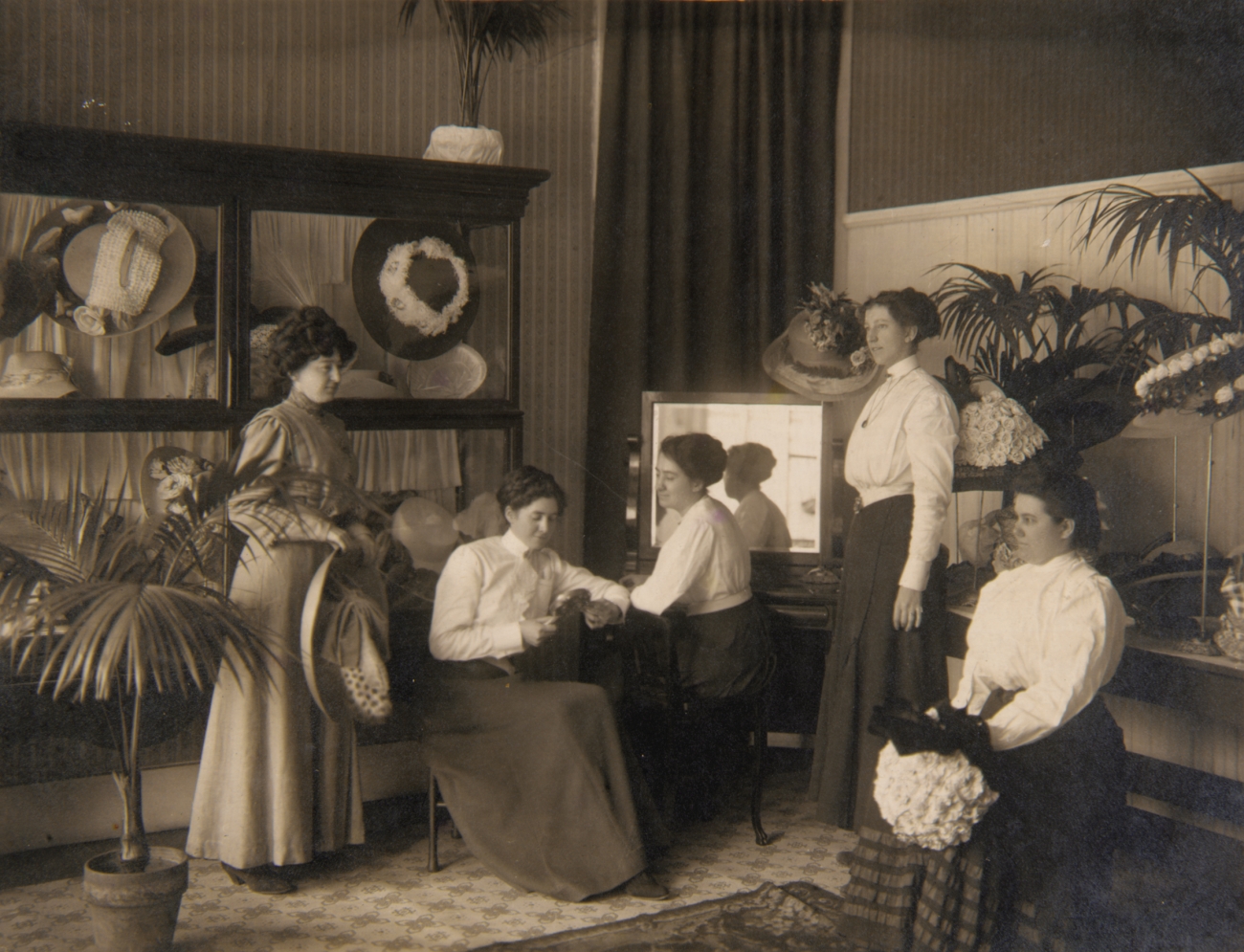
The trend at the end of the Victorian era was for dramatic feathers.
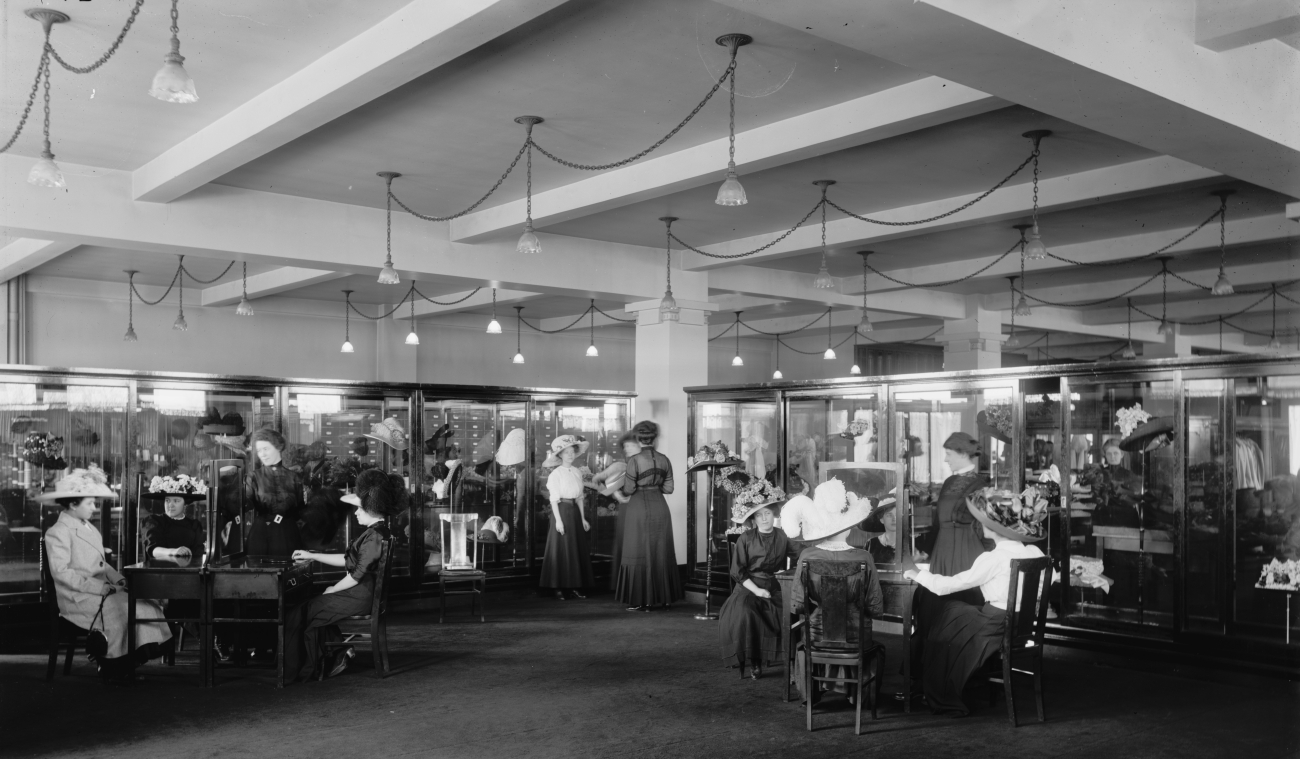
During the 1910s huge hats came into fashion, retaining some of the large plumage that was so adored in the previous era.
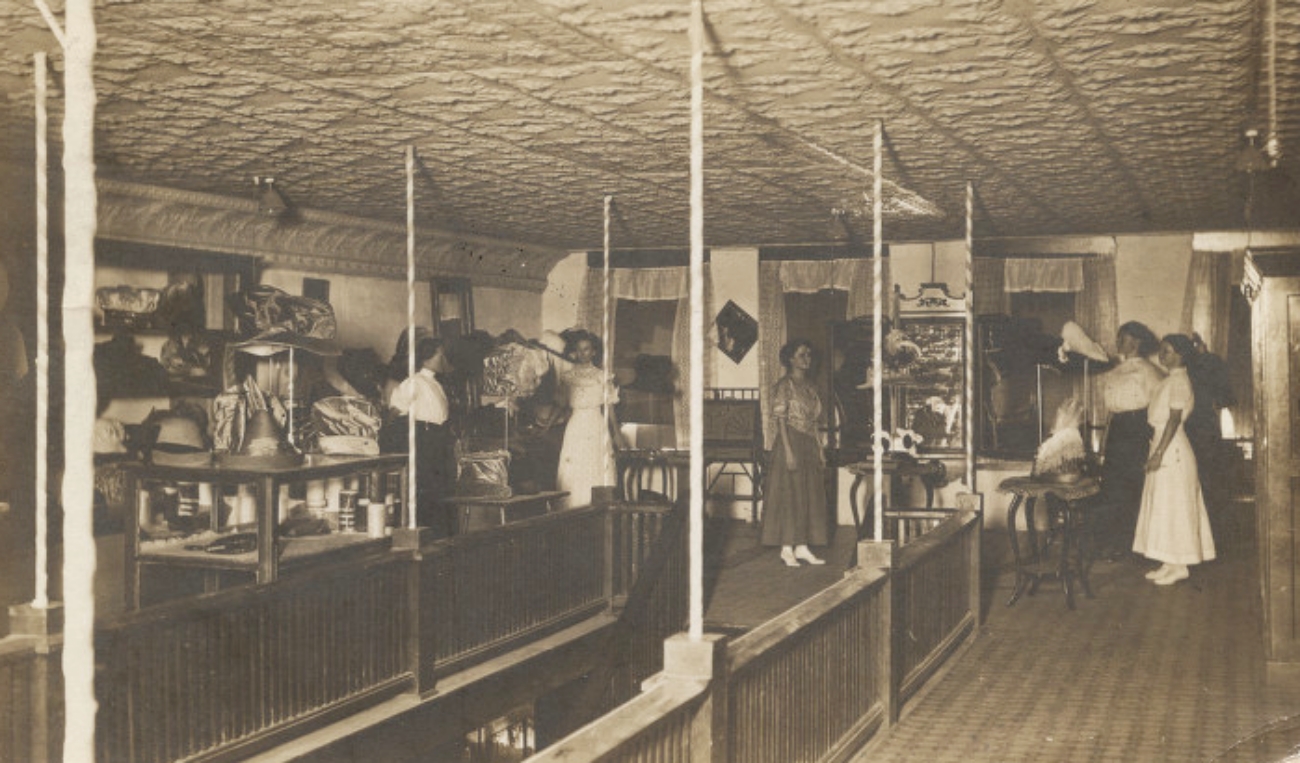
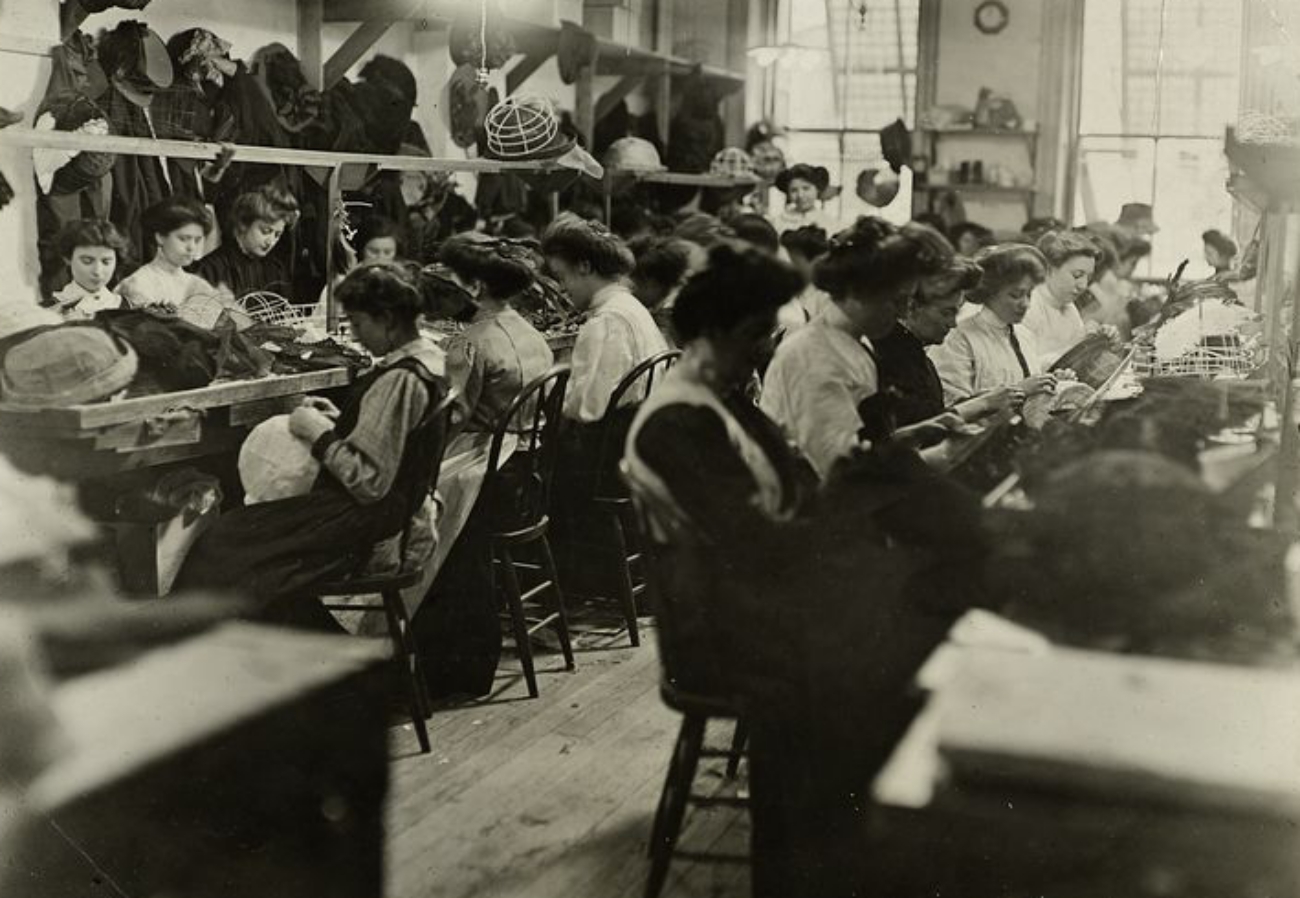
Mass manufacturing made hats more affordable in the early 20th century, but the decoration was often still done by hand. Millinery work rooms were filled with hat forms, hats, and women working on them busily.
Department stores began to fill the need for hats, offering some custom services and lots of ready-made designs and embellishments that could be added on if desired.
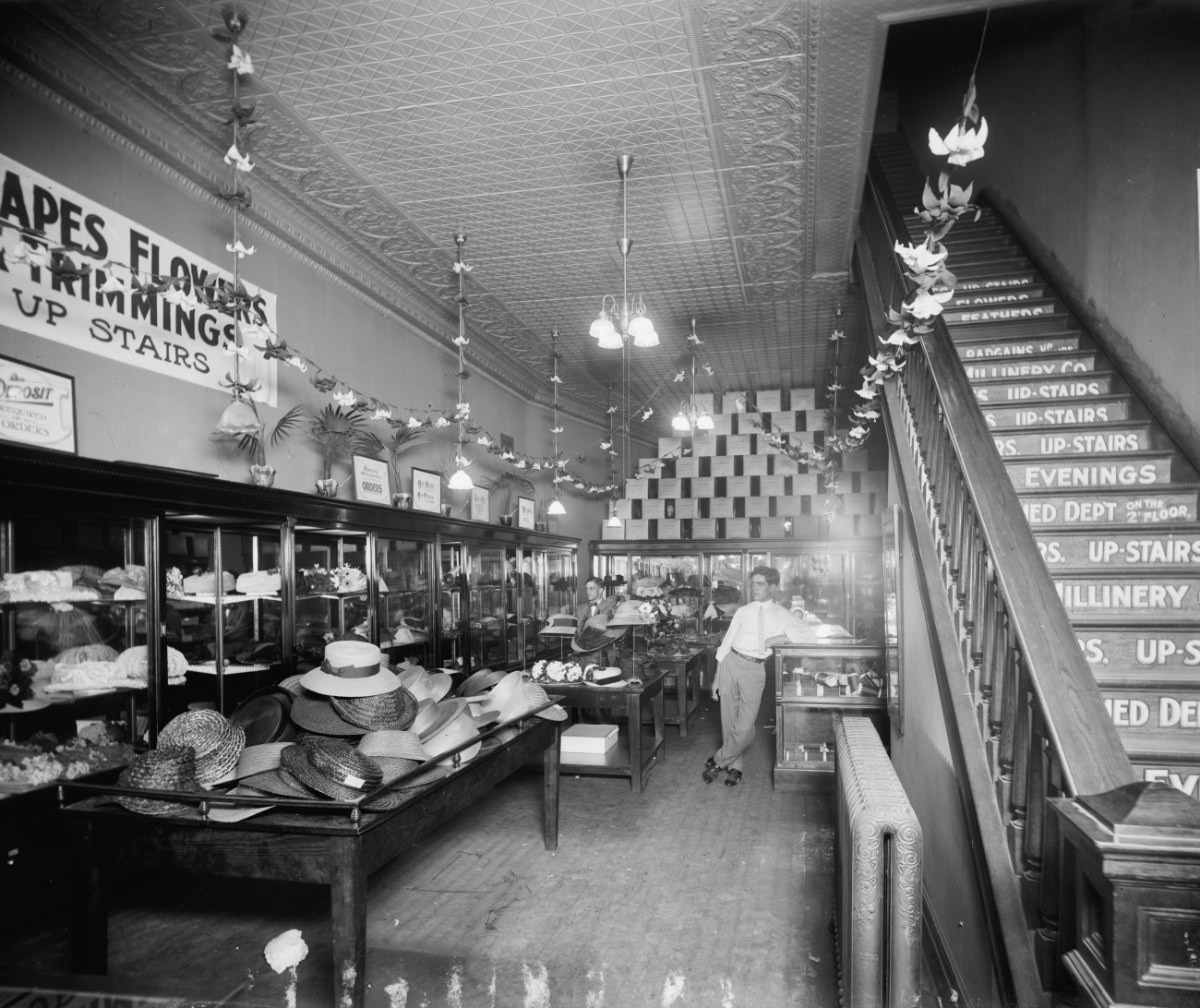
By the 1920s has had become more modern. They were smaller and hugged the head in the cloche style that continued to be popular in the 1930s, too. The smaller hats were suitable for even students to decorate and classes were offered in trade schools for young women to learn this valuable skill.
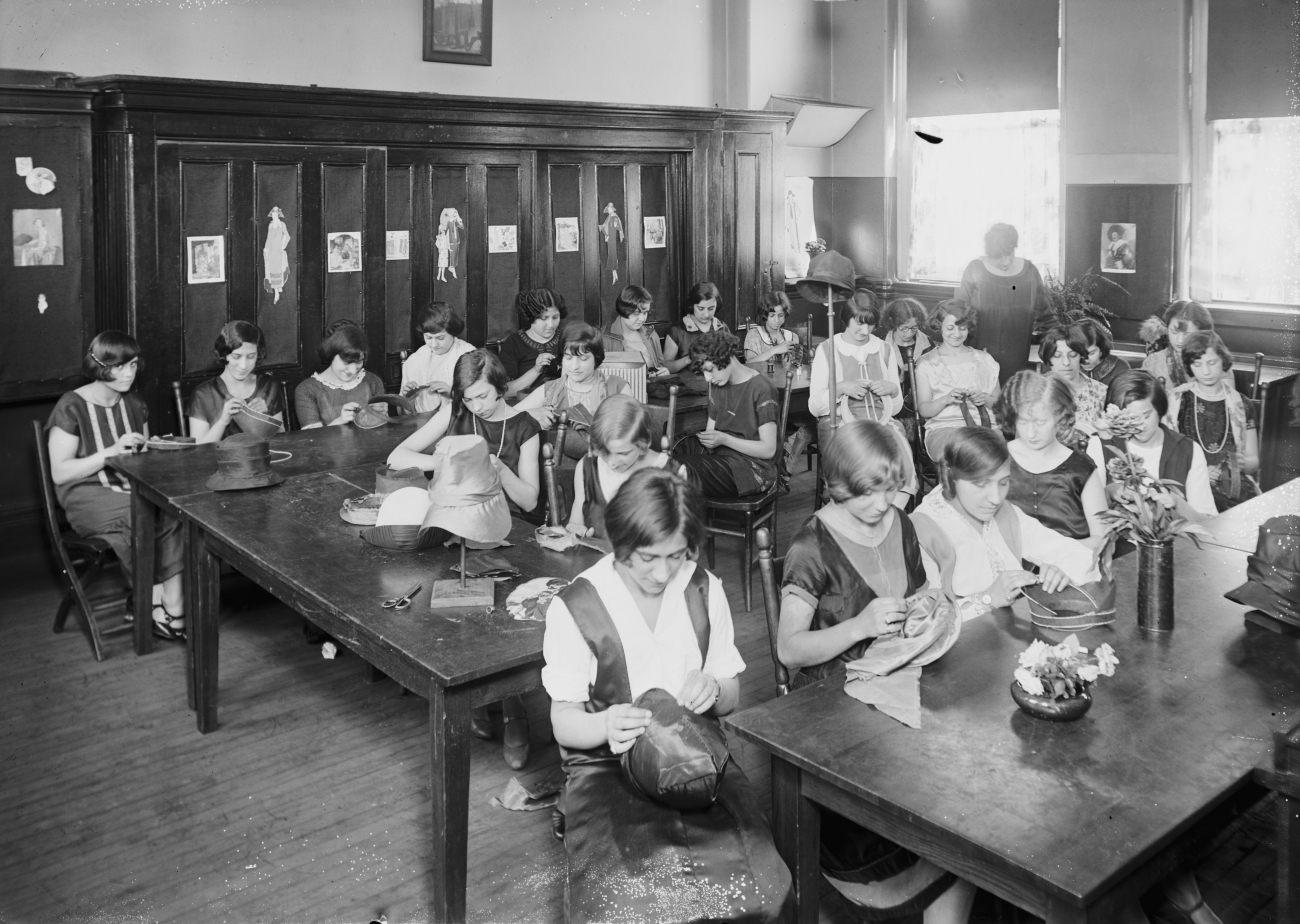
By the 1940s hats had gone up in size again, but never back to the massive Gibson girl hats. Instead the hats remained small on the head to let the meticulously-curled hairstyles of the day dominate the look.
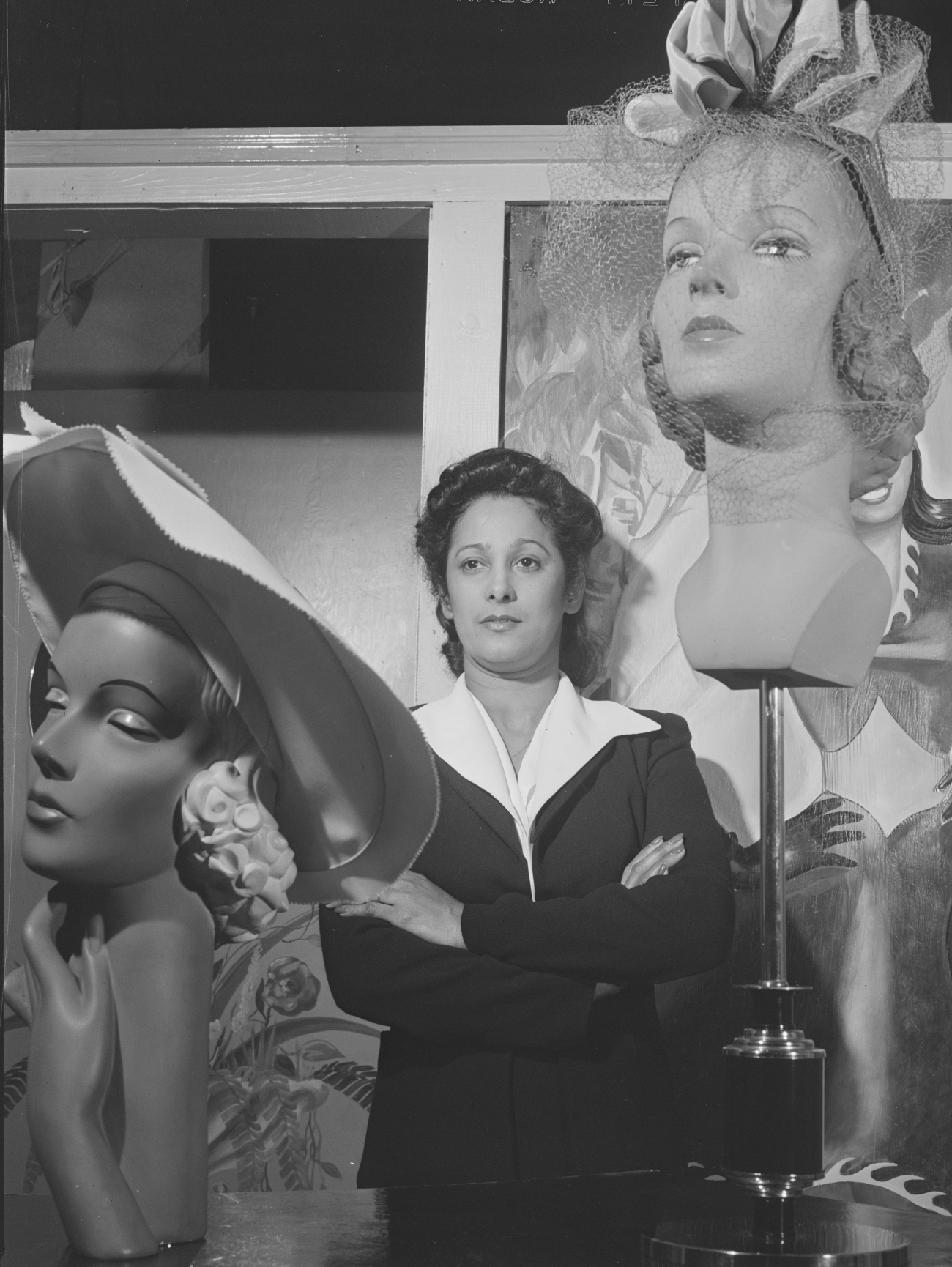
Hollywood costumes influenced hat designs with some of them reaching new heights a la Carmen Miranda. Custom hats were still very much in style during this time, but if you didn’t have a lot of money you might order your hats from the Sears catalog or buy them from a general store.

Many women bought their hats from five and dime stores, otherwise known as 10 cent stores. These hats were not as complicated in design and you wouldn’t get custom sizes. But, the fact that both men and women wore hats everyday meant that you could always find something in your size.
By the 1960s many people stopped wearing hats all the time and instead only wore hats for sports, for inclement weather, or for special occasions.
SKM: below-content placeholderWhizzco for DOT

